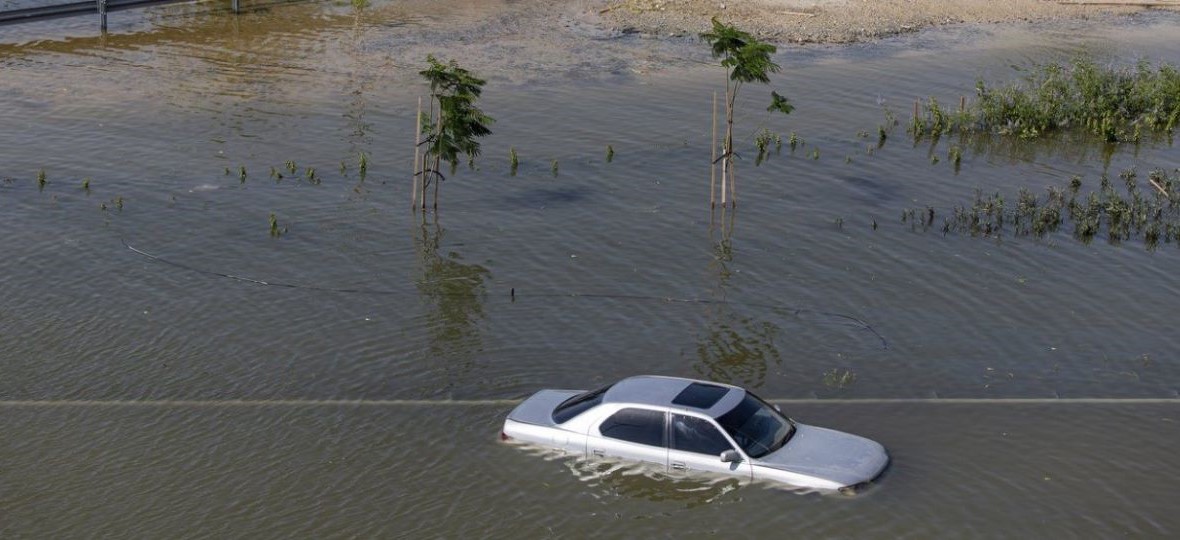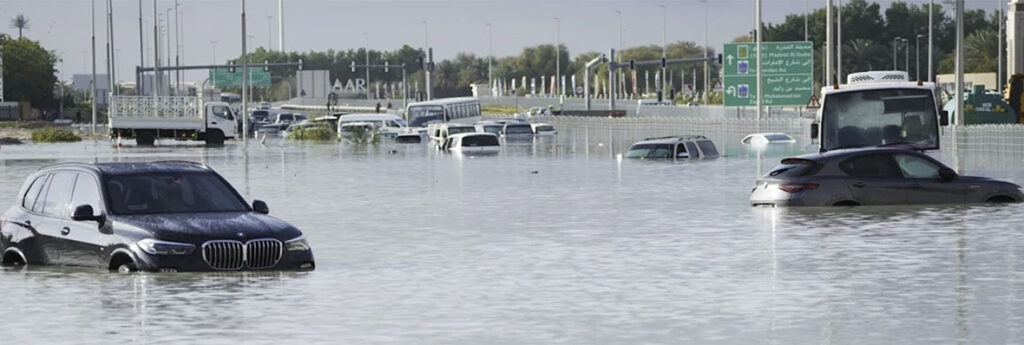Dubai International Airport allowed global carriers to again fly into Terminal 1 on Thursday as the United Arab Emirates struggled to recover from the heaviest recorded rainfall ever to hit the desert nation. But on Friday, Emirates said it would again halt local check-in for passengers, with the order lasting through the entire day into early Saturday as the UAE’s main airport worked to restore normal operations even as floodwater still covered portions of major highways and roads.
The airport ended up needing 22 tankers with vacuum pumps to get water off its grounds. Dubai Airports CEO Paul Griffiths acknowledged that taxiways flooded during the rains, though the airport’s runways remained free of water to safely operate. Online videos of a FlyDubai flight landing with its reverse thrust spraying out water caught the world’s attention.
Emirates, whose operations had been struggling since the storm Tuesday, had stopped travellers flying out of the UAE from checking into their flights as they tried to move out connecting passengers. Pilots and flight crews also had a hard time reaching the airport given the water on roadways.
On Thursday, Emirates lifted that order to allow customers into the airport. That saw some 2,000 people come into Terminal 3, again sparking long lines, Griffiths said.
Others who arrived at the airport described hours-long waits to get their baggage, with some just giving up to head home or to whatever hotel would have them.
The UAE typically sees little rainfall in its arid desert climate. However, a massive storm forecasters had been warning about for days blew through the country’s seven sheikhdoms.
By the end of Tuesday, more than 142 mm of rainfall had soaked Dubai over 24 hours. An average year sees 94.7 mm of rain at Dubai International Airport. Other areas of the country saw even more precipitation.
The UAE’s drainage systems quickly became overwhelmed, flooding out neighbourhoods, business districts and even portions of the 12-lane Sheikh Zayed Road highway running through Dubai.

The state-run WAM news agency called the rain “a historic weather event” that surpassed “anything documented since the start of data collection in 1949.”
In a message to the nation late Wednesday, Emirati leader Sheikh Mohammed bin Zayed Al Nahyan, the ruler of Abu Dhabi, said authorities would “quickly work on studying the condition of infrastructure throughout the UAE and to limit the damage caused.”
On Thursday, people waded through oil-slicked floodwater to reach cars earlier abandoned, checking to see if their engines still ran. Tanker trucks with vacuums began reaching some areas outside of Dubai’s downtown core for the first time as well. Schools remain closed until next week.
Authorities have offered no overall damage or injury information from the floods, which killed at least one person.
The flooding sparked speculation that the UAE’s aggressive campaign of cloud seeding – flying small planes through clouds dispersing chemicals aimed at getting rain to fall – may have contributed to the deluge. But experts said the storm systems that produced the rain were forecast well in advance and that cloud seeding alone would not have caused such flooding.
Jeff Masters, a meteorologist for Yale Climate Connections, said the flooding in Dubai was caused by an unusually strong low pressure system that drove many rounds of heavy thunderstorms.
Scientists also say climate change is responsible for more intense and more frequent extreme storms, droughts, floods, and wildfires around the world. Dubai hosted the United Nations’ COP28 climate talks just last year.
Abu Dhabi’s state-linked newspaper The National in an editorial Thursday described the heavy rains as a warning to countries in the wider Persian Gulf region to “climate-proof their futures.”
“The scale of this task is more daunting that it appears even at first glance, because such changes involve changing the urban environment of a region that for as long as it has been inhabited, has experienced little but heat and sand,” the newspaper said.

